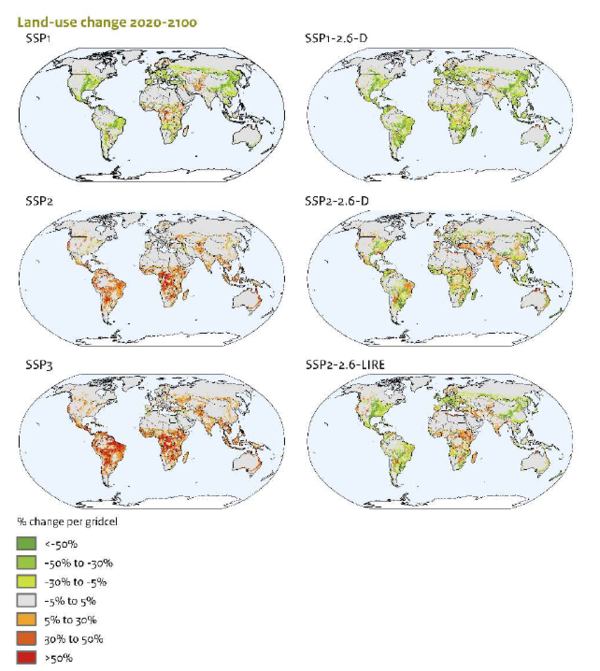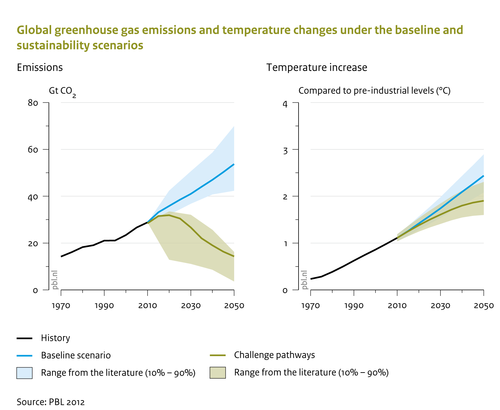IMAGE framework summary/Interaction
| Projects/Applications |
| Relevant overviews |
| Key publications |
Interaction between the Human system and the Earth system
Land cover/land use and emissions comprise the interaction.
The Human system influences the Earth system in various ways, such as land use and atmospheric emissions, but also water extraction, and water and soil pollution. The representation of key factors of land use and atmospheric emissions in the IMAGE model are discussed below.
Land cover and land use
Using demand for agricultural products, including food, feed and bioenergy, the Land-use allocation model locates production areas on a 5 x 5 minute grid (Component Land-use allocation). A region-specific regression based suitability assessment and an iterative allocation procedure are used. Alternatively, the land-use model can also integrate CLUMondo (using a more complex allocation procedure). In most regions, the main determinants of suitability for agricultural expansion are population density, accessibility, topography, and agricultural productivity. In the model, suitability is used in combination with regional preferences for different types of production systems (determined from historical calibration) to allocate land use to the grid. In addition, the IMAGE land use and land cover module (Component Land cover and land use) collects and combines information from the agricultural system and the Earth system to provide maps of land-use and land-cover parameters, including fertiliser input, livestock densities, rain-fed and irrigated crop fractions, bioenergy crops, and forest management.
Example: In most baseline scenarios, increased agricultural production in tropical regions leads to loss of natural ecosystems and associated biodiversity loss. Most expansion is projected to occur in highly productive ecosystems close to agricultural areas, including tropical forests and woodland, and other high nature value savannah and grassland areas. The agricultural area is contracting in temperate zones and the grid cells least suitable for production potential are abandoned. The resulting changes in land use are depicted in the figure below.
Emissions
In IMAGE, emissions are described as a function of activity levels in the energy system, in industry, in agriculture and land-cover and land-use change, and they are also influenced by assumed abatement actions (Component Emissions). The model describes emissions of major greenhouse gases, and many air pollutants, calibrated to current international emission inventories. In some cases, the emission calculation uses detailed process representation on a grid (e.g., emissions from cultivated land and land-cover change) but in most cases, exogenous emission factors are used. Change in emission factors over time is estimated according to the storyline, sometimes assuming constant emission factors, but often assuming emission factors decrease over time along with economic development (consistent with the environmental Kuznets curve). Abatement of greenhouse gas emissions reflects estimates per region, sector and gas often optimised in the FAIR model (Component Climate policy).
Example: In the Rio+20 baseline, increasing energy and agricultural production levels lead to an increase of associated greenhouse gas emissions (the figure below). For air pollutants, the emission trends are more diverse. A decrease is projected in high-income countries, as emission factors drop faster than activity levels increase. However, in most developing country regions, increasing energy production is projected to be associated with more air pollution. In the policy scenarios, the target to keep global mean temperature change below 2 °C requires global greenhouse gas emissions to be reduced by about 50% in 2050. This is achieved in the model by structural changes in the energy system and by changes in emission and abatement factors.
Downscaling is used as a tool to link different geographical scales

